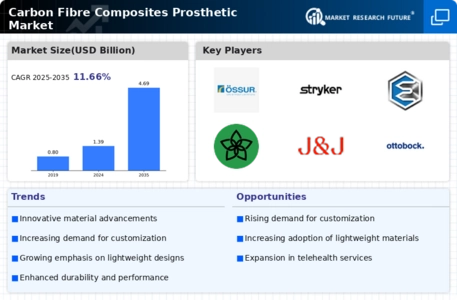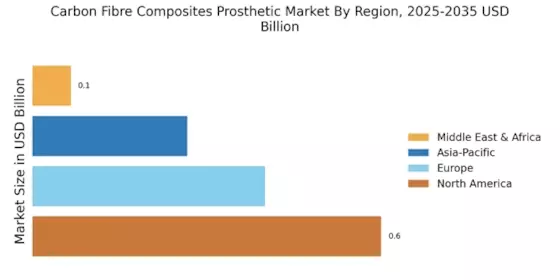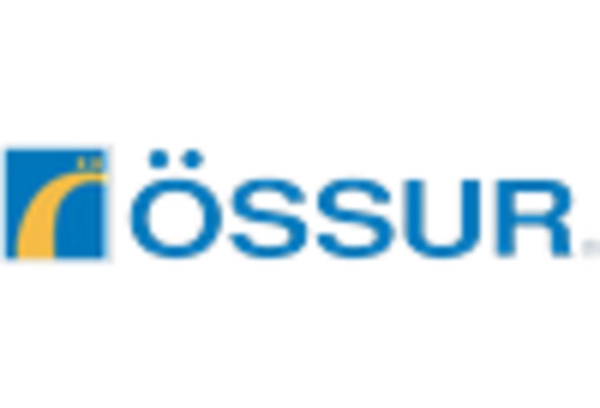Focus on Patient-Centric Design
The focus on patient-centric design is reshaping the Carbon Fibre Composites Prosthetic Market. Manufacturers are increasingly prioritizing user experience, leading to the development of prosthetics that are not only functional but also aesthetically pleasing. This trend is driven by the recognition that comfort and style are essential for user satisfaction. Market Research Future indicates that products designed with the end-user in mind tend to perform better in terms of sales and customer loyalty. As the industry continues to embrace this philosophy, the demand for carbon fibre composites is expected to grow, reflecting a shift towards more personalized prosthetic solutions.
Rising Demand for Lightweight Materials
The increasing demand for lightweight materials in the Carbon Fibre Composites Prosthetic Market is a notable driver. As advancements in material science continue, carbon fibre composites are recognized for their superior strength-to-weight ratio. This characteristic is particularly appealing in prosthetics, where reducing weight can enhance user comfort and mobility. Reports indicate that the market for lightweight materials is projected to grow significantly, with carbon fibre composites expected to capture a substantial share. This trend is likely to encourage manufacturers to invest in research and development, further propelling the Carbon Fibre Composites Prosthetic Market.
Advancements in Manufacturing Techniques
Innovations in manufacturing techniques are transforming the Carbon Fibre Composites Prosthetic Market. Techniques such as automated fiber placement and 3D printing are enabling the production of complex geometries that were previously unattainable. These advancements not only improve the efficiency of production but also reduce costs, making carbon fibre prosthetics more accessible. The market is witnessing a shift towards more sophisticated manufacturing processes, which could lead to a projected increase in market size. As these technologies become more mainstream, they are likely to enhance the overall quality and performance of prosthetic devices.
Growing Awareness of Prosthetic Solutions
The growing awareness of advanced prosthetic solutions is driving the Carbon Fibre Composites Prosthetic Market. As more individuals become informed about the benefits of carbon fibre composites, including their durability and aesthetic appeal, the demand for these products is likely to rise. Educational initiatives and outreach programs are playing a crucial role in disseminating information about the advantages of modern prosthetics. This heightened awareness is expected to contribute to an increase in market penetration, as more users seek out high-quality, innovative solutions for their mobility needs.
Increased Investment in Healthcare Technologies
Increased investment in healthcare technologies is a significant driver for the Carbon Fibre Composites Prosthetic Market. Governments and private entities are allocating substantial funds towards the development of advanced medical devices, including prosthetics. This influx of capital is facilitating research and innovation in carbon fibre composites, leading to improved product offerings. Market data suggests that the healthcare technology sector is experiencing robust growth, which is likely to benefit the prosthetic market as well. As funding continues to flow into this area, the potential for breakthroughs in carbon fibre composite applications appears promising.


















Leave a Comment